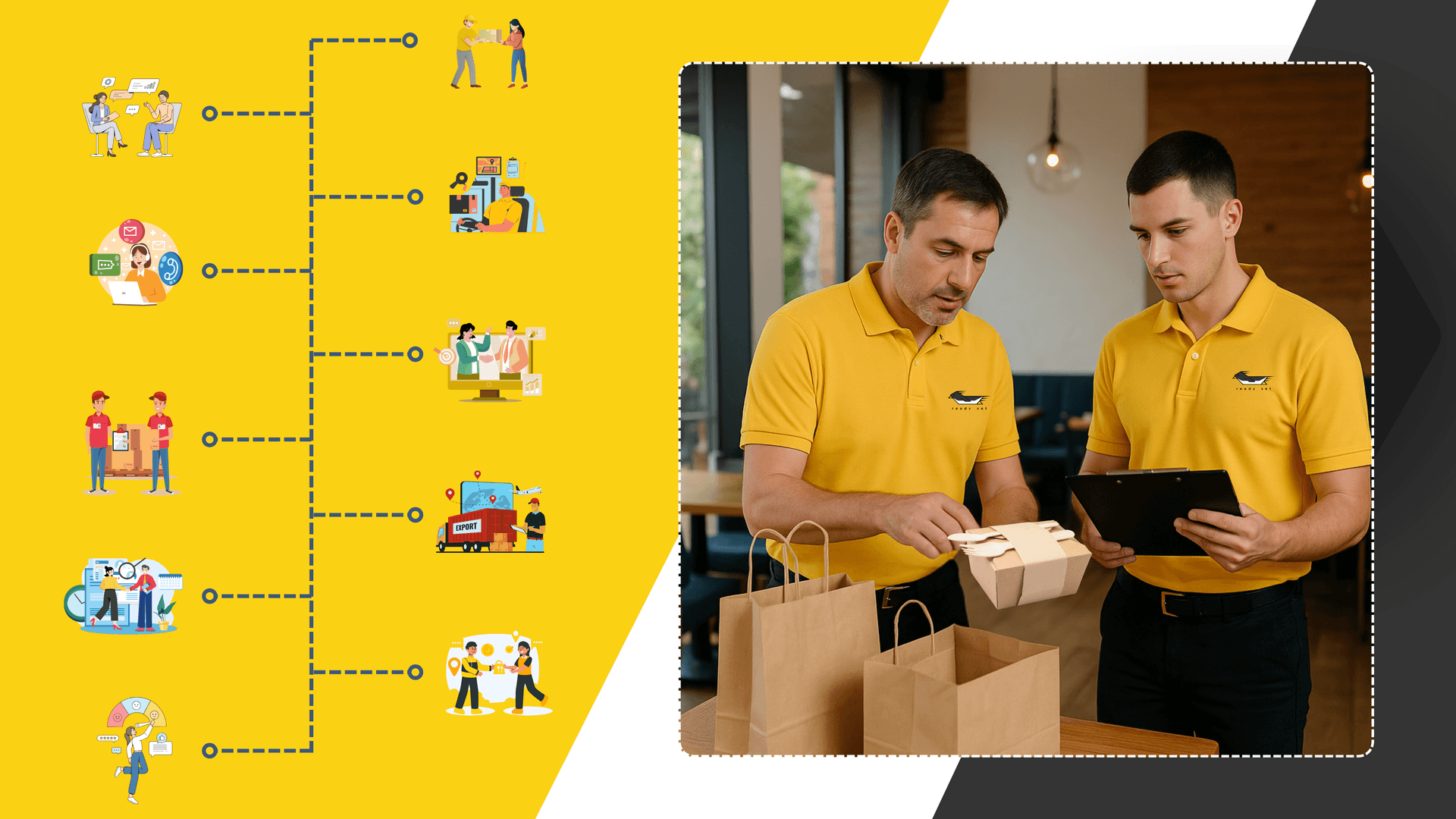How to Train your Staff and Drivers for Exceptional Delivery Service

A delivery service is more than simply transporting packages from point A to point B—it’s about delivering exceptional customer experiences that foster loyalty and enhance your brand’s reputation.
Whether you're running a restaurant, an e-commerce store, or a logistics company, your delivery team represents your business at the customer's doorstep. With consumers expecting faster, more transparent, and increasingly personalized delivery options, your staff and drivers have become the frontline ambassadors of your brand.
Why Exceptional Delivery Service Matters
The pandemic accelerated e-commerce growth by five years in just months, and with it, customer expectations have skyrocketed. According to an article, 94% of customers blame the retailer for poor delivery experiences, not the delivery service. This means your delivery team's performance directly impacts customer retention and your bottom line.
Creating a Comprehensive Training Framework
1. Start with the Right Hiring Process
Building exceptional delivery service begins before training—it starts with hiring the right people:
- Look beyond driving records. While clean driving records are essential, soft skills like communication, problem-solving, and customer service orientation are equally important.
- Implement behavioral interviewing. Ask candidates how they've handled difficult customer situations in the past.
- Consider ride-alongs or work shadowing. Have potential hires accompany experienced staff and drivers to understand the daily challenges of the role.
2. Develop a Structured Onboarding Program
New hires should receive comprehensive training that covers:
- Company culture and values. Help them understand how their role contributes to the company's mission.
- Customer service standards. Define what "exceptional service" means for your organization with clear examples.
- Technology training. Ensure everybody including drivers are comfortable with delivery apps, GPS systems, and any proprietary technology.
- Route optimization. Teach techniques to efficiently plan deliveries while maintaining service quality.
- Safety protocols. Cover defensive driving, proper lifting techniques, and safety best practices.
3. Emphasize Soft Skills Development
Technical skills get the package delivered, but soft skills make the experience exceptional:
- Communication training. Teach staff and drivers how to greet customers professionally, handle complaints, and communicate delivery updates effectively.
- Problem-solving scenarios. Role-play common challenges like difficult-to-find addresses, customer not home situations, or unexpected road closures.
- Empathy development. Help all employees understand the importance of their role in customers' lives, especially for time-sensitive or important deliveries.
4. Implement Continuous Learning Opportunities
Training shouldn't end after onboarding:
- Regular refresher courses. Schedule quarterly sessions on safety, customer service, and company updates.
- Peer mentoring programs. Pair new hires and drivers with experienced team members who exemplify your service standards.
- Cross-training. Give employees exposure to different operations and customer service roles to understand the entire delivery process.
Leveraging Technology for Better Training and Performance
1. Use Data-Driven Insights
- Track key performance indicators like on-time delivery rates, customer satisfaction scores, and delivery exceptions.
- Identify patterns in customer feedback to address recurring issues in your training program.
- Use overall performance data to identify staff and drivers who might benefit from additional coaching and efficient driving techniques training.
2. Implement Simulation Training
- Virtual reality simulations can help drivers practice navigating challenging delivery scenarios without real-world consequences.
- GPS navigation challenges can prepare employees and drivers for finding difficult locations efficiently.
- Customer interaction simulations can help all staff including drivers practice handling different personalities and situations.
3. Mobile Learning Solutions for Drivers
- Microlearning modules delivered via smartphones can provide just-in-time training for drivers in the field.
- Quick reference guides accessible through mobile apps can help drivers handle unusual situations.
- Video tutorials can demonstrate proper techniques for package handling, customer interactions, and safety procedures.
Creating a Culture of Exceptional Service
1. Lead by Example
- Managers should demonstrate the service standards they expect from their teams.
- Share success stories during team meetings to reinforce positive behaviors.
- Create service heroes by publicly recognizing exceptional performance.
2. Implement Effective Feedback Systems
- Regular performance reviews should include both metrics and customer feedback.
- Ride-along evaluations allow managers to provide immediate coaching opportunities.
- 360-degree feedback from customers, peers, and managers provides a comprehensive view of performance.
3. Incentivize Excellence
- Performance-based bonuses tied to customer satisfaction scores can motivate exceptional service.
- Recognition programs that highlight top performers create healthy competition.
- Career advancement opportunities for consistently high-performing staff and drivers show that excellence is rewarded.
Measuring Training Effectiveness
To ensure your training program delivers results:
- Track customer satisfaction scores before and after training initiatives.
- Monitor delivery metrics like on-time performance and exception rates.
- Analyze driver retention rates as an indicator of job satisfaction and training effectiveness.
- Conduct regular feedback sessions with staff and drivers to identify training gaps.
In summary
In a competitive marketplace where customers have countless options, exceptional delivery service can be your key differentiator. By investing in comprehensive training programs for your staff and drivers, you're not just improving operations—you're building brand ambassadors who create loyal customers with every delivery.
Remember that training is an ongoing process, not a one-time event. Continuously evaluate and refine your approach based on customer feedback, performance metrics, and emerging industry trends.
Your delivery team may be the only human interaction customers have with your brand. Make sure they're equipped to make every delivery an exceptional experience.

Ready to take your delivery team to the next level? Contact us to learn how our customized services can help transform your delivery operations.

Save 78% on Hiring Costs with a Virtual Assistant.
Save More. Gain Time. Book a Call Today.